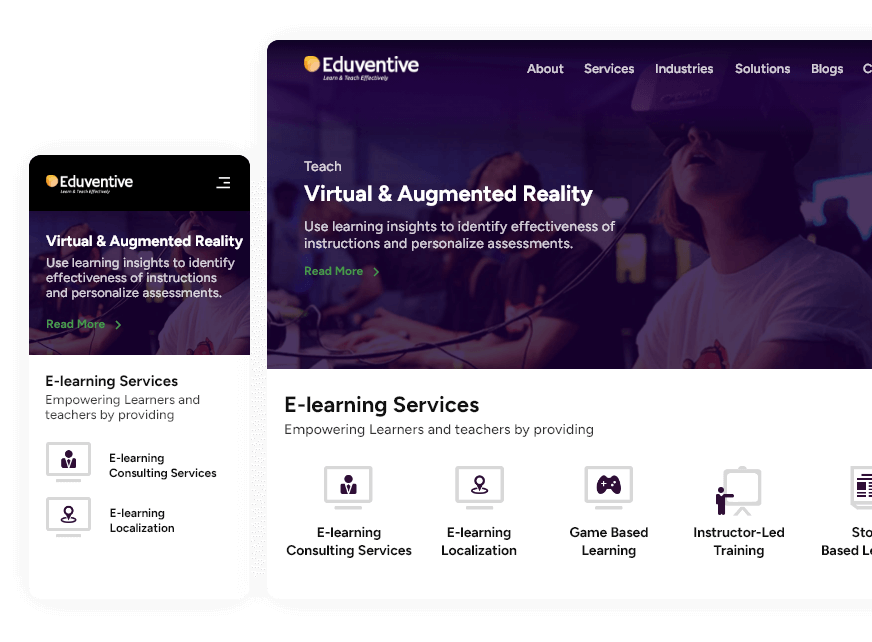Desktop Application Development Services
Desktop applications offer exceptional versatility and functionality regarding the technologies utilized in their development. Moreover, they are not constrained by the limitations often associated with mobile and web applications. Robust and innovative desktop applications developed by Finoit are innovative, high-performance applications that perfectly align with your business needs. We are adept at crafting customized and enterprise-level applications with seamless, user-friendly designs. Finoit can be your trusted partner in enhancing productivity with feature-rich desktop applications and achieving your goals with our top-notch desktop application development services.
- Full Stack Software Agency
- 250+ Certified Developers
- Flexible Plans

Different Desktop Application Development Services Finoit offers
Finoit offers comprehensive desktop application development services, each tailored to address specific business needs and technical requirements.
Custom Desktop Application Development
This services category focuses on creating bespoke applications from the ground up, designed to meet each client’s unique needs. This service involves detailed requirement analysis, custom coding, and thorough testing to ensure the application delivers precisely what the client requires regarding functionality, performance, and user experience.
Cross-platform Desktop App Development
In cross-platform desktop app development services, we build applications that run seamlessly on multiple operating systems, such as Windows, macOS, and Linux. We leverage frameworks like Electron, Qt, and Xamarin to ensure cross-platform compatibility, allowing businesses to reach a broader audience without developing separate applications for each operating system.
Desktop Application Modernization
Our modernization services are aimed at updating and upgrading legacy desktop applications. This service includes re-engineering outdated software to improve performance, add new features, and ensure compatibility with modern hardware and operating systems. In providing these services, we employ the latest technologies and development practices to breathe new life into older applications, enhancing their usability and extending their lifecycle.
Desktop Application Integration
These integration services ensure that new or existing desktop applications can communicate and work efficiently with other software systems, databases, and third-party services. Our desktop application integration service involves using APIs, middleware, and custom integration solutions to facilitate seamless data exchange and operational synergy, which enhances the overall efficiency and functionality of the business processes.
Universal Windows Platform (UWP) Application Development
It is a specialized service for the Windows ecosystem, enabling the creation of applications that run smoothly across all Windows 10 devices, including PCs, tablets, and smartphones. To offer these services, we leverage UWP to develop applications that offer a unified user experience and take advantage of the latest Windows features, such as Live Tiles, Cortana integration, and touch support.
API Development
It is a critical service that enables desktop applications to interact with other software systems. We create robust and secure APIs that facilitate data exchange and extend the functionalities of desktop applications. This service ensures that applications can communicate effectively with other internal or external systems, enhancing their overall capabilities.
Desktop Application Maintenance and Support Services
Our Desktop Application Maintenance and Support services ensure that desktop applications remain up-to-date, secure, and fully functional over time. We provide ongoing support to address issues, including bug fixes, performance tuning, and feature enhancements. With this proactive service, we help maintain the application’s reliability and efficiency throughout its lifecycle.
Client-server Desktop Application Development
This category of services involves creating applications that function within a client-server architecture. This approach is essential for applications that require efficient data management and real-time communication between clients and servers. We are fully equipped to develop robust client-server applications that ensure secure data transactions, high performance, and scalability.
Desktop Application Redesign
Our redesign services focus on revamping existing desktop applications to improve their user interface and user experience. Our services include redesigning the application’s layout, updating its visual elements, and incorporating modern design trends and technologies. The goal is to enhance the application’s usability, make it more visually appealing, and align it with current user expectations and industry standards.
Different types of Desktop Applications We develop
Finoit develops various sophisticated applications, each with specific technical features and capabilities, demonstrating its ability to deliver customized solutions that cater to various industry needs, enhancing productivity, automation, collaboration, and system utility. Listed below are offerings to our clients:
Productivity Applications
Productivity applications include word processors, spreadsheet software, and presentation tools. Finoit employs technologies like Microsoft .NET, Java, and C++ to help users perform tasks more efficiently. Key features of these applications include rich text editing, formula calculations, data visualization through charts and graphs, and integration with cloud services for real-time collaboration and data storage.
Automation Applications
Automation applications aim to reduce manual intervention in repetitive tasks, and we leverage technologies such as robotic process automation (RPA), Python scripting, and AI/ML algorithms to create them. Our automated applications integrate with various APIs and databases to fetch and process data automatically. They also incorporate error handling, logging, and scheduling functionalities to ensure smooth and reliable operations.
Collaboration Applications
Security is critical in our collaboration applications, with features like end-to-end encryption, role-based access control, and integration with Single Sign-On (SSO) and multi-factor authentication (MFA). Our collaboration tools enable effective communication and teamwork within organizations and leverage frameworks like Electron and React for developing desktop clients, while backend services might utilize Node.js, .NET Core, or Java Spring Boot. These applications feature real-time messaging, video conferencing, file sharing, and collaborative document editing.
Data Management Applications
Our data management applications help store, retrieve, and analyze large volumes of data and employ robust database technologies such as SQL Server, MySQL, MongoDB, and Oracle. The applications include database management systems (DBMS), data analytics platforms, and customer relationship management (CRM) software and offer functionalities like data querying, reporting, dashboard creation, and data visualization.
Scientific and Engineering Applications
These applications are tailored for scientific research and engineering tasks, including simulation, modeling, and analysis. We use high-performance computing (HPC) technologies and languages like C++, MATLAB, and Python to build desktop applications such as CAD software, finite element analysis (FEA) tools, and computational fluid dynamics (CFD) applications.
Project Management Applications
Our project management applications help organizations plan, execute, and monitor projects and leverage technologies like Angular, React, and .NET Core. Key features of these applications include task management, Gantt charts, resource allocation, time tracking, and reporting tools. These applications can seamlessly integrate with other enterprise tools like ERP systems, provide real-time updates, and support collaboration through shared dashboards and communication tools.
Entertainment Applications
We develop desktop entertainment applications using frameworks like Unity for game development and multimedia frameworks like DirectX, OpenGL, and FFmpeg for media playback and editing. These applications include video games, media players, and multimedia editing software. These feature-rich desktop applications have high-quality graphics, real-time rendering, audio processing, and support for various media formats.
Utility Applications
Our utility applications are designed to enhance the system’s functionality and performance. We employ languages like C++, Python, and Rust. Our offerings in this category include antivirus software, disk cleanup tools, system optimizers, and backup solutions. They desktop applications also offer real-time scanning, system monitoring, performance optimization, and secure data backup and recovery.
Desktop Application Development Projects we have worked on
We have successfully delivered many desktop application development outcomes leveraging Linux, Apache, MySQL, Perl/PHP/Python to design customized solutions for businesses in every industry. Here are some of our reference work in desktop application development services:
Why Choose Finoit as Your Desktop Application Development Partner
At Finoit, we follow a comprehensive and collaborative process to ensure that every aspect of your product’s journey is expertly managed, from initial concept to continuous improvement. Let’s work together to create products that make a lasting impact.
Proven Expertise
Finoit boasts extensive experience of more than 12 years in developing a wide array of desktop applications, from productivity tools to complex scientific software. With a team of highly skilled developers proficient in technologies such as Microsoft .NET, Java, C++, and modern frameworks like Electron and Qt, Finoit delivers robust and scalable solutions.
Guaranteed Results
We are committed to delivering high-quality applications that meet or exceed client expectations. We employ a structured development process that includes detailed requirement analysis, iterative development, and rigorous testing to ensure the final product aligns perfectly with the client’s vision.
Robust QA Pipeline
Quality assurance is a keystone of Finoit’s development process. We implement a comprehensive QA pipeline that includes unit testing, integration testing, system testing, and user acceptance testing. Automated testing tools and continuous integration/continuous deployment (CI/CD) practices are also utilized to detect and fix issues early in the development cycle.
Feedback-driven Process
We encourage a feedback-driven development approach, ensuring client input is actively sought and incorporated throughout the project lifecycle. Regular updates, milestone reviews, and iterative prototypes are provided to keep clients informed and involved.
Time-zone Friendly
Our global presence and flexible working hours enable us to accommodate clients from various time zones. Moreover, our time-zone friendliness ensures effective communication, timely updates, and real-time collaboration, regardless of the client’s location.
No Project Queues
We prioritize client projects by maintaining a scalable and efficient resource allocation model. We promptly start working on new client engagements which minimizes delays, ensures faster project initiation, and accelerates the development timeline, allowing clients to achieve their business objectives more quickly.
What does our clients say about
our Desktop Application Development Services
Desktop Application Development Process We Follow
We follow a structured and client-centric development process to ensure the delivery of high-quality, reliable, and user-friendly desktop applications that meet the specific needs and goals of our clients.
Requirement Analysis
The development process begins with a thorough requirement analysis. This phase involves detailed discussions with the client to understand their needs, business goals, and project scope. Our team then conducts feasibility studies, market research, and competitive analysis to gather all necessary information to serve as the foundation for the project.
Planning and Design
The project roadmap is created in the planning and design phase, outlining timelines, milestones, and resource allocation. The design team works on creating wireframes and prototypes to visualize the application’s layout and user interface. User experience (UX) and user interface (UI) design principles are applied to ensure the application is intuitive and user-friendly. Detailed technical specifications, including architecture design and technology stack, are also defined in this phase.
Development
The development phase is where the actual coding takes place. We follows an agile development methodology, which allows for iterative progress and continuous feedback. The project is divided into small, manageable sprints, each focusing on developing specific features or modules. Regular sprint reviews and updates ensure that the project remains on track and aligns with the client’s vision.
Quality Assurance
Quality assurance (QA) is integral to the development process, and we implement a robust QA pipeline that includes multiple testing stages. Unit testing ensures individual components function correctly, while integration testing verifies that different parts of the application work together seamlessly. System testing evaluates the application’s performance in a complete environment, and user acceptance testing (UAT) ensures it meets the client’s requirements and expectations. Automated testing tools and CI/CD practices are also used to maintain high quality and efficiency.
Deployment
Once the application passes all QA stages, it is ready for deployment. The deployment phase involves setting up the application in the client’s environment, whether on-premises or in the cloud. Finoit ensures a smooth deployment by conducting thorough deployment testing and validation. Detailed documentation and deployment guides are provided to the client to facilitate smooth transitions and operation.
Maintenance and Updates
Post-deployment, we offer ongoing maintenance and support services to ensure the application remains functional, secure, and up-to-date. Regular updates enhance performance, add new features, and address any issues. Support services include bug fixing, performance optimization, and technical assistance, ensuring the application continues to meet the client’s needs over time.
Benefits of Our Desktop
Application Development Services
Our services offer various benefits that ensure your desktop applications are high-quality and reliable, aligned with your business goals and budget, and drive long-term success and efficiency.
Tailor-made Solutions
Our desktop application development services are designed to deliver tailor-made solutions that precisely meet your business needs. We thoroughly analyze your requirements, ensuring every feature and functionality is customized to support your specific processes and objectives.
Dedicated and Scalable Team
We provide a dedicated team of experienced developers, designers, and project managers who focus exclusively on your project. This team works closely with you throughout development, ensuring a deep understanding of your needs and continuous alignment with your goals.
Dedicated and Scalable Team
We provide a dedicated team of experienced developers, designers, and project managers who focus exclusively on your project. This team works closely with you throughout development, ensuring a deep understanding of your needs and continuous alignment with your goals.
Competitive Pricing Model / Price Advantages
Our competitive pricing model ensures you receive high-quality desktop application development services at a cost-effective rate. We offer transparent and flexible pricing structures, including fixed-price contracts, time-and-materials pricing, and retainer-based models, allowing you to choose the option that best fits your budget and project scope.
Business-friendly Hiring Models
We offer business-friendly hiring models that allow you to engage our services in a way that suits your operational needs. Whether you prefer a dedicated development team, staff augmentation, or project-based engagement, we have the right model to support your business strategy.
In-time Delivery
We are committed to delivering your desktop application projects on time, ensuring you meet your business deadlines and market launch dates. Our well-defined project management processes, including agile methodologies and regular progress updates, help us adhere strictly to timelines.
Transparency
Transparency is a cornerstone of our desktop application development services. We maintain open and honest communication throughout the project lifecycle, providing regular updates, detailed progress reports, and clear documentation. Our clients have full visibility into the development process, including timelines, milestones, and potential challenges.
Technologies we use for
Desktop Application Development Services
Get in Touch!
Ready to transform your business with a custom desktop application? Get in touch with us today! Our expert team is here to provide tailored desktop application services that meet your unique needs. Contact us now to start your journey towards enhanced productivity and efficiency.
Get in touch, let’s discuss your project
Risk-free, Trusted Software Development Partner
-
Experienced and Proven
A custom software development firm with over 14 years of credibility in delivering premium software development services.
-
Transparent and Dependable
Micr-level visibility in processes that build trust and makes us a highly transparent software development company.
-
In-budget, On-time
A software development agency that Startups, SMBs, and enterprises rely on for in-budget and on-time delivery of their software development needs.
Frequently Asked Questions (FAQs)
What is a desktop application?
A desktop application is software designed to run on a desktop or laptop computer, typically providing specific functionalities to the user. These applications are installed directly on the operating system, such as Windows, macOS, or Linux, and can function independently of an internet connection, although some may require occasional online access for updates or certain features. Examples include productivity software like Microsoft Office, design tools like Adobe Photoshop, and utility applications like antivirus programs.
What is desktop app development?
Desktop app development is the process of creating software applications that run on desktop or laptop computers. This involves several stages, including requirement analysis, design, coding, testing, and deployment. The development process uses various programming languages and frameworks, such as C++, Java, .NET, and Electron, depending on the application’s requirements and the target operating system. The goal is to develop a reliable, efficient, and user-friendly application tailored to the specific needs of users or businesses.
What team is needed for desktop app development?
A typical desktop app development team consists of several key roles:
- Project Manager: Oversees the project
- ensuring it stays on track and meets deadlines. Business Analyst: Gathers and analyzes requirements
- ensuring the application meets business needs. UI/UX Designer: Creates the application’s user interface and designs a seamless user experience. Developers: Write the code for the application. This can include front-end developers for the user interface and back-end developers for the underlying system functionality. Quality Assurance (QA) Testers: Test the application for bugs
- performance issues
- and user experience problems. DevOps Engineer: Manages deployment
- integration
- and continuous delivery pipelines. Technical Support: Provides ongoing support and maintenance after the application is deployed.
How long does it take to build a desktop application?
The time required to build a desktop application varies widely based on the complexity and scope of the project. A simple application with basic functionality might take a few weeks to a couple of months to develop. In contrast, a more complex application with advanced features, extensive integrations, and high-performance requirements can take several months to over a year. Key factors influencing the timeline include the development team’s size, the requirements’ clarity, and the development process’s efficiency.
How much does it cost to build a desktop application?
The cost of building a desktop application depends on several factors, including the application’s complexity, the technologies used, the size and location of the development team, and the project’s timeline. A simple application with basic features might cost between $10,000 and $50,000. In contrast, a more complex application with extensive functionality, custom integrations, and high-performance requirements can range from $50,000 to several hundred thousand dollars. It’s essential to get a detailed estimate based on specific project requirements.
What factors should I consider while developing a desktop app?
When developing a desktop app, consider the following factors:
- Target Audience: Understand who will be using the application and tailor the functionality and design to their needs.
- Operating System: Decide which operating systems the application will support (Windows, macOS, Linux).
- Performance: Ensure the application is optimized for performance, particularly if it handles large data sets or requires significant computational resources.
- User Experience (UX): Design an intuitive and user-friendly interface to enhance user satisfaction and productivity.
- Security: Implement robust security measures to protect user data and prevent unauthorized access.
- Scalability: Ensure the application can scale to accommodate future growth or increased demand.
- Integration: Consider how the application will integrate with other software and systems the users might be using.
We need to verify a desktop application idea. What should we do?
To verify a desktop application idea, start with a few key steps:
- Market Research: Conduct thorough market research to understand the demand for your application and identify potential competitors.
- Prototype Development: Create a prototype or a minimum viable product (MVP) to visualize the concept and gather early feedback.
- User Feedback: Engage with potential users to gather feedback on the prototype or MVP. This can help you understand their needs and preferences.
- Feasibility Analysis: Perform a technical and business feasibility analysis to ensure the idea is viable from both perspectives.
- Iterative Testing: Refine the prototype based on user feedback and testing results, iterating until the concept is validated.
- Business Plan: Develop a detailed business plan outlining the development process, cost estimates, and potential revenue models.

























